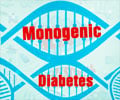Scientists say that an evolutionary gene mutation that occurred in human millions of years ago and our subsequent inability to produce a specific kind of sugar molecule appears to

Jane J. Kim, corresponding study author from Rady Children's Hospital, said the findings represent the first documented evidence linking the sugar production to insulin and glucose metabolism problems associated with diabetes.
"Given the global epidemic of obesity and diabetes, we think that these findings suggest that evolutionary changes may have influenced our metabolism and perhaps increased our risk of the disease," Kim said.
Type 2 diabetes is caused by both genetic and environmental factors, such as a fatty diet and lack of exercise, that result in progressively dysfunctional pancreatic beta cells, elevated blood sugar levels due to insulin resistance and eventual health complications, sometimes fatally so.
Sialic acids are sugar molecules found on the surfaces of all animal cells, where they act as vital contact points for interaction with other cells and with their surrounding environment.
Virtually all mammals produce two types: N-acetylneuraminic acid (Neu5Ac) and N-glycolylneuraminic acid (Neu5Gc).
Advertisement
Researchers compared two groups of mice: one with a functional CMAH gene, the other with an altered CMAH gene similar to the human mutation.
Advertisement
Kim said the findings help refine understanding of why obese humans appear to be particularly vulnerable to type 2 diabetes.
The study has been published in the Feb. 24 online edition of The FASEB Journal, a publication of the Federation of American Societies of Experimental Biology.
Source-ANI















